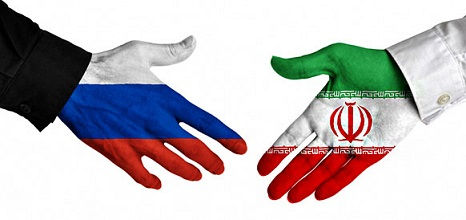Despite Competitive Interests, Gazprom and NIOC Inaugurate Full-Scale Energy Partnership
- Mariana Liakopoulou
- Jan 5, 2018
- 4 min read

On December 13, Gazprom CEO Alexey Miller paid a working visit to Tehran, as a result of which a number of documents were signed by the Russian state-owned firm and National Iranian Oil Company (NIOC) on the implementation of integrated projects along the entire gas value chain. In particular, Iran’s Deputy Oil Minister and NIOC Managing Director, Ali Kardor, agreed with Mr. Miller to launch a roadmap on the initiation of a proof-of-concept study with the aim of realizing infrastructure projects related to production and transmission of hydrocarbons extracted within Iran’s Exclusive Economic Zone (EEZ), as well as on the processing and monetization of the obtained natural gas through petrochemical use. Moreover, A. Miller, A. Kardor and Nasrat Rahimi, Chairman of the Board of Directors of Iran’s Oil Industry Pension, Saving and Stuff Welfare Fund co-signed a memorandum of understanding on prospective collaboration in a $4bn liquefied natural gas (LNG) project. Finally, Gazprom chief also held a meeting with Iran’s Oil Minister, Bijan Zangeneh, where the two sides confirmed their interest in ensuring a stable development of bilateral cooperation.
As one of the key negotiators in the 2015 landmark nuclear deal with Iran, Russia was consciously helping to reawaken a potent competitor for gas exports. Even though Hamidreza Araqi, Managing Director of the National Iranian Gas Company (NIGC), has said that Iran does not plan to undermine Russia’s position in the European gas market, it is no secret that Tehran aspires to add its gas to the Southern Gas Corridor pipe network via the Trans Anatolian Pipeline (TANAP), especially after the introduction of a new contract model, mainly designed to attract Western companies’ know-how to the development of the aging or too difficult Iranian fields in the post-sanctions era, as notably happened with France’s Total in the case of the giant South Pars field. On the contrary, Russia is already advancing on its own southern gas supply route under the Black Sea via the ongoing Turk Stream pipeline project and the revival of Poseidon project, conjointly with the Greek Public Gas Corporation (DEPA) and Italian utility Edison. Furthermore, the decision of traditional purchasers of Urals crude, like Poland and Belarus, to either receive or engage in talks to receive Iranian oil, has given Moscow a first taste of what potential co-existence with Tehran in the European space would actually mean. Therefore, this recent attempt by Gazprom to acquire a stake in the Iranian gas sector and partially control Iranian gas streams could be interpreted as a means of preventing Iranian competition with Russian gas in Europe.
In addition, the fact that Iran is resuming previously abandoned LNG activities in parallel with the development of Russian LNG projects in Europe gives yet another reason for the two parties’ competition on the European energy market to be strengthened. This is why, now that Novatek’s Yamal LNG has sold its first cargo to Petronas, and that Gazprom and Shell are fully involved in the expansion of Sakhalin II project and the implementation of the Balkan LNG project in Leningrad Oblast, Russia also claims a role in Iran’s path to becoming an LNG exporter by offering to cooperate in NIOC LNG, a liquefaction plant under construction at Tombak Port. The first phase of the project, that froze back in 2012 as sanctions imposition rendered impossible the imports of necessary German equipment, includes two LNG trains, each with a capacity of 5.25MT/a. The second phase could see the plant being expanded to 21MT/a with the addition of two extra trains. Until suspension of construction works, $2.3bn had been invested into the project, that had been completed by more than 50%.
Russia and Iran, whose positions distinctly diverge from one another when it comes to the preferred delimitation of the Caspian Sea, following adoption of the median line sectoral division by the former, have been cultivating their energy ties since the beginning of the present year. A few months ago, Iranian Oil Minister Bijan Zanganeh confirmed the signing of an initial agreement with Gazprom on the development of Farzad A, Farzad B, North Pars and Kish fields, in the Persian Gulf. The 12.5TCF Farzad B was first discovered by Oil and Natural Gas Corporation (ONGC), however, India’s decision to cut oil imports from Iran by a fifth in 2017-2018 because of Tehran’s delay in granting the Indian firm development rights soon led to the Gazprom-NIOC pact. Response to the rising energy needs of India and Pakistan, projected to expand by a further 50% until 2030, is pursued by several Caspian Sea littoral states, including Turkmenistan, who hopes to launch at some point the slowly progressing Turkmenistan-Afghanistan-Pakistan-India (TAPI) pipeline project. A memorandum of understanding between the Russian Energy Ministry and the Iranian Petroleum Ministry, signed earlier in 2017, provides for the conduct of a feasibility study for the design, construction and operation of another major project, the Iran-Pakistan-India pipeline, proves that Gazprom is equally determined to have a say concerning Iran’s both westward and eastward export ambitions.
Available online at: http://www.caspianpolicy.org/energy/caspian-energy-insight-january-3-2018/#5







Comments